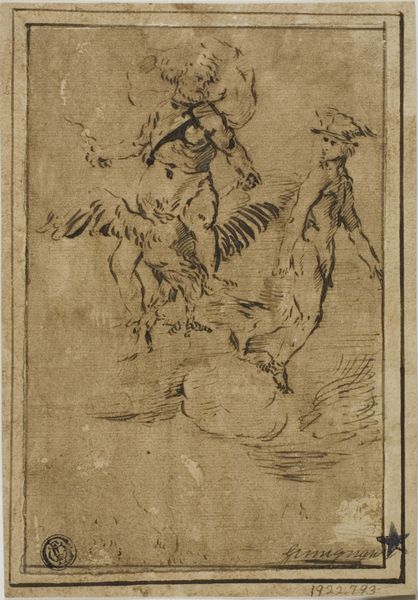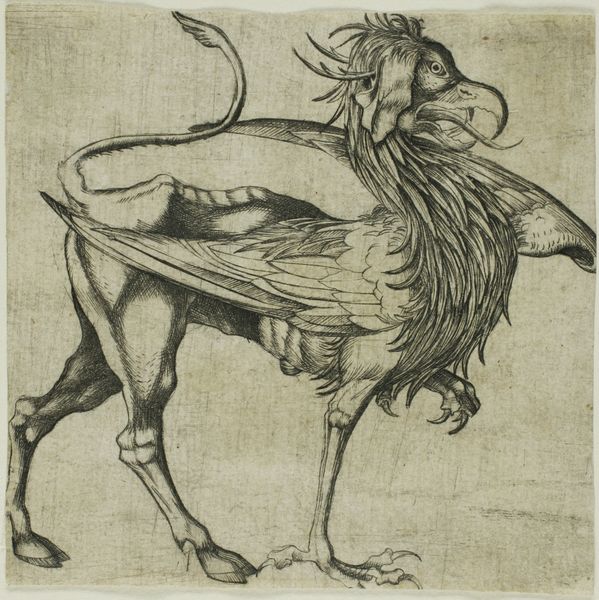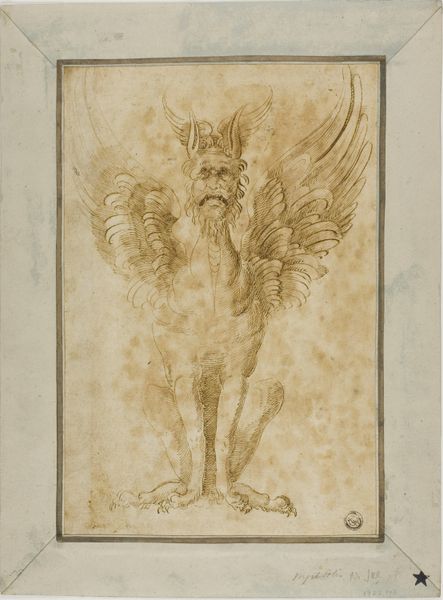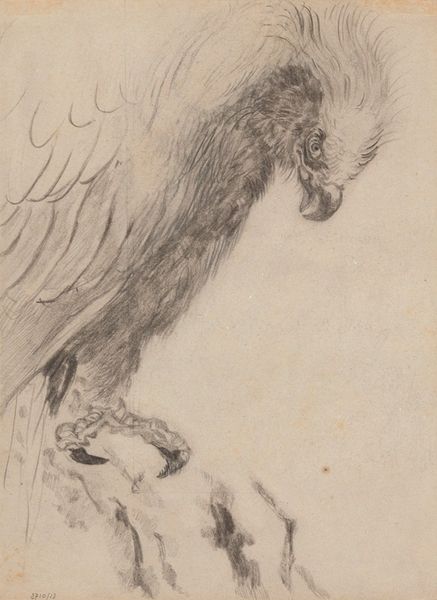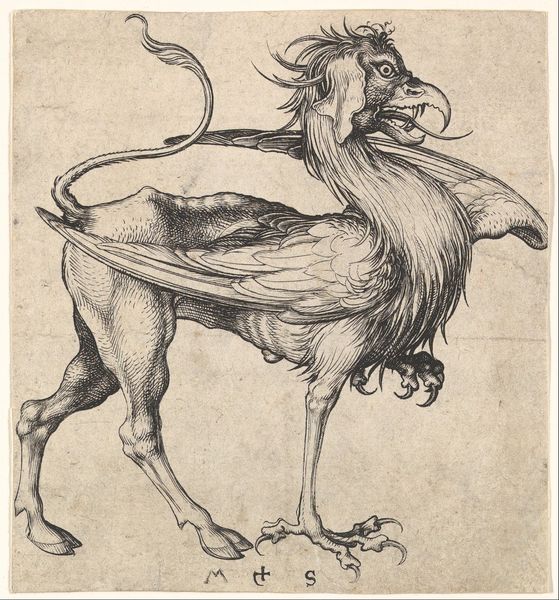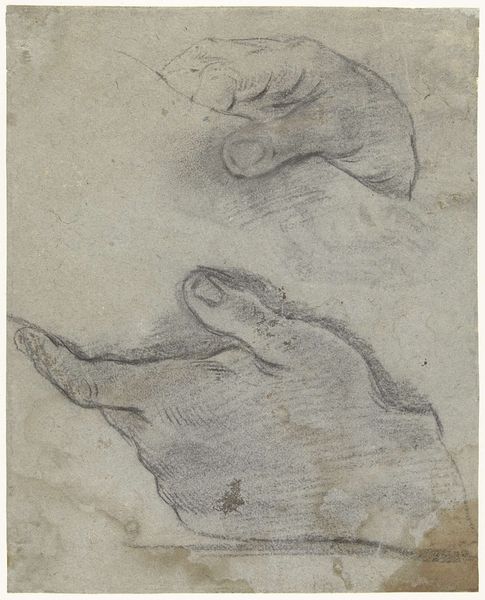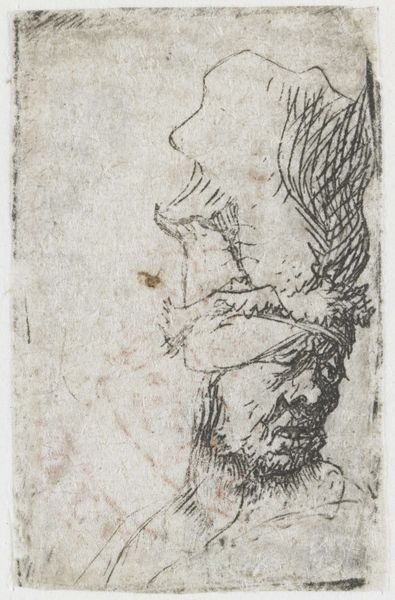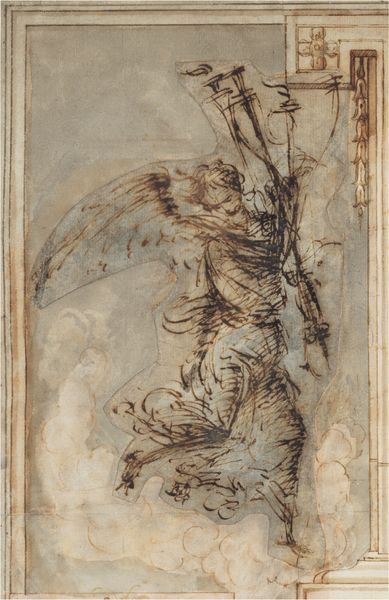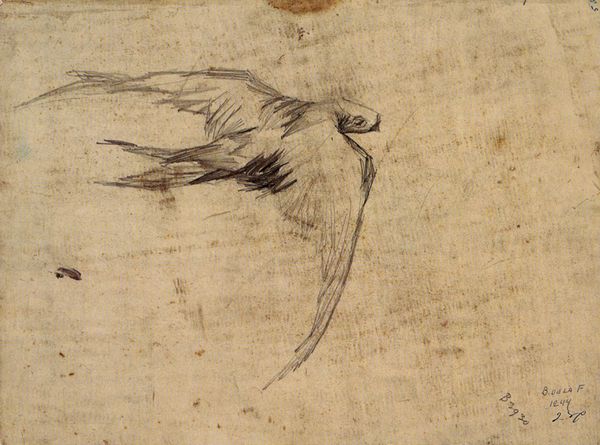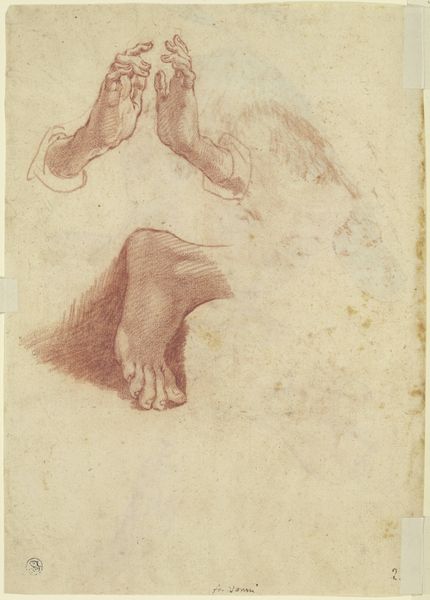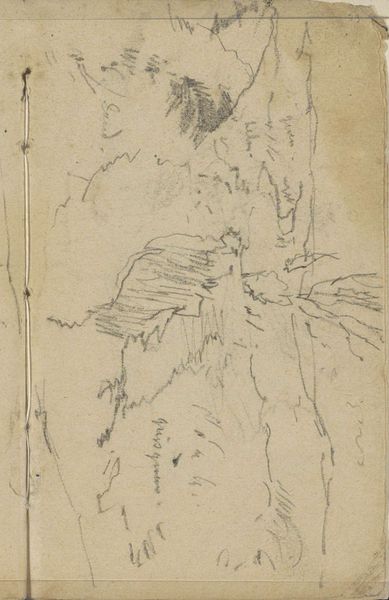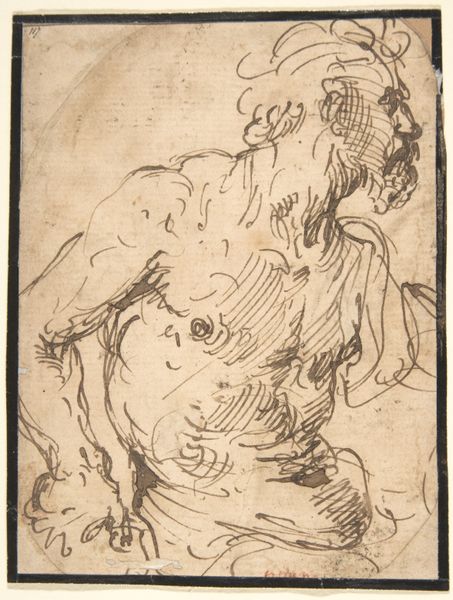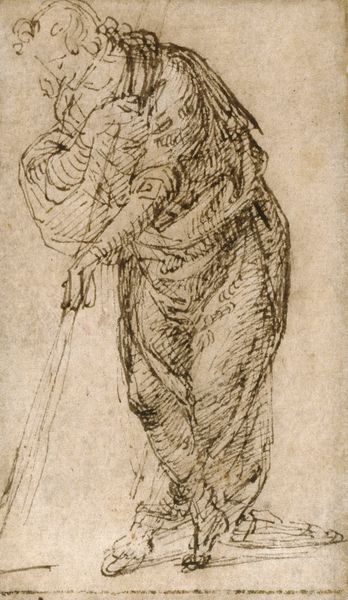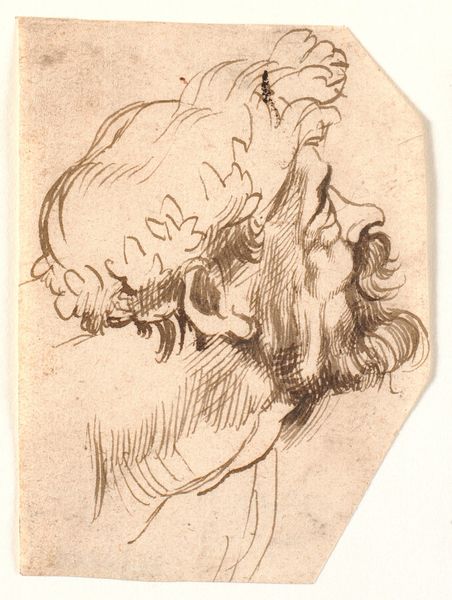
drawing, paper, ink
#
portrait
#
drawing
#
etching
#
figuration
#
paper
#
11_renaissance
#
ink
#
italian-renaissance
Dimensions: overall (upper corners cut): 9.3 × 9.3 cm (3 11/16 × 3 11/16 in.)
Copyright: National Gallery of Art: CC0 1.0
Titian likely made this drawing of ‘An Eagle’ sometime in the 16th century. The composition, confined within a small, almost square format, presents a striking study in form and energy. With brown ink on paper, Titian captures the fierce essence of the eagle. Look closely at how Titian used line to convey texture and movement. The jagged lines describing the eagle’s feathers contrast with the smoother curves of its neck and wing, creating a dynamic tension. The rapid, sketchy strokes give a sense of immediacy, as if the eagle were caught mid-motion. The eagle is presented as an emblem of power. Consider how the upper corners are cut, altering the conventional rectangular shape. This subtle intervention destabilizes the viewer's expectations, prompting a closer look at the interplay between the figure and its ground. Such engagement with the material and its presentation is a powerful reminder that art is not just about representation, but about actively shaping our perception.
Comments
No comments
Be the first to comment and join the conversation on the ultimate creative platform.
